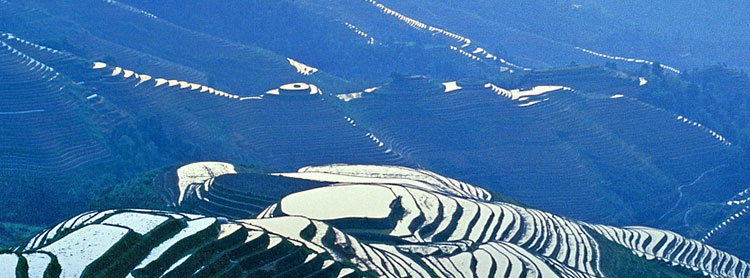
 Discover Guilin
Discover Guilin
Xing'an is a county in the north of Guilin city, South China's Guangxi Zhuang autonomous region. It played a vital role in cultural exchanges between the Central Plains and the Lingnan (South China) in history. The county covers an area of 2,348 square kilometers, administers 10 townships and has a population of 400,000, which comprises 27 ethnic groups.
With a history of over 2,200 years, Xing'an has profound cultural deposit. It belonged to Lingling county during the Qin Dynasty (221-206 BC). It was known as Shi'an in the Han Dynasty (206 BC-AD 220) and Linyuan county in the Tang Dynasty (618-907). The county got its name as Xing'an in the Song Dynasty (960-1279).
Xing'an has rich tourism resources. The Xiangjiang River, which belongs to the Yangtze River, and the world-famous Lijiang River, which is an integral component of the Pearl River, flow across the county together. The Lingqu Canal, a man-made canal honored as the "Pearl of the World's Ancient Water Conservancy Architecture," was inscribed the world's Heritage Irrigation Structures in August 2018. It is home to the Mount Mao'er, which is one of the highest mountains in southern China, a memorial hall for the Battle of the Xiangjiang River during the Long March in the 1930s, and the ruins of an ancient town built in the Qin Dynasty.
Xing'an boasts great geographical advantages. The county is about 57 kilometers away from downtown area of Guilin and 60 kilometers away from Guilin Liangjiang International Airport. The No.322 state-level road, the Quanzhou-Nanning Highway and the Hunan-Guangxi Railway have traversed the place together.
A bullet train has run between Xing'an and Guangzhou, a metropolitan city in Guangdong province. The opening of the train service has further shortened the distance between Xing'an and Guilin.
Nowadays, Xing'an is striving to integrate itself into a three-hour economic circle, which comprises the capital areas of Hunan, Guangdong, Guizhou and Sichuan provinces.
Xing'an also has a large amount of mineral and agricultural resources. It has been known as China's hometown for mineral powder, raw bamboo and gingko tree, in addition to the high quality of its grape and tangerine.
Since the 13th Five-Year Plan (2016-2020) period, Xing'an has witnessed impressive development of its economic and social affairs. For instance, its economy and fixed-asset investment have posted an annual average growth of 5.9 percent and 11.7 percent respectively. Meanwhile, its fiscal revenue has grown by an average of 8.25 percent annually. The average per capita disposable income for urban and rural people has averagely increased by 6.4 percent and 9.4 percent on a yearly basis.